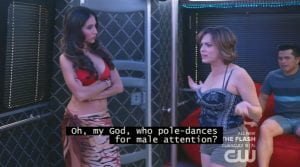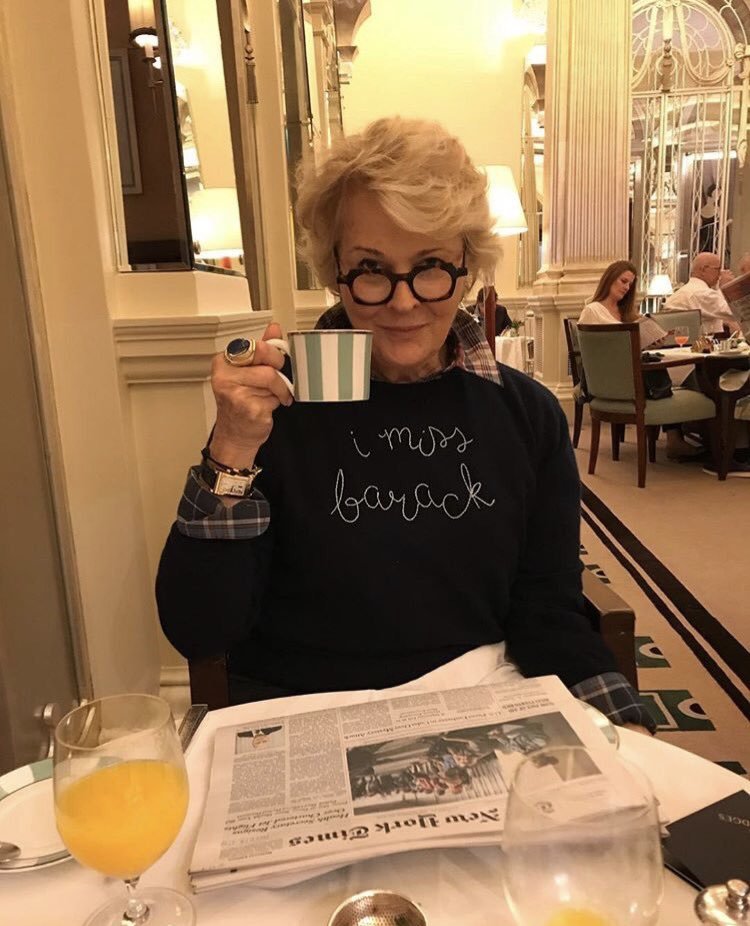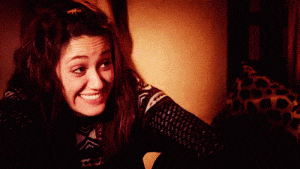Medich, Rob et al. “Flashes.” Entertainment Weekly, no. 678, 2002, p. 16,
This article from Entertainment Weekly breaks down some occupations shown on TV. It compares the prominence of these occupations to the composition of those occupations in real life. A notable comparison comes in the medical field, where 12.1% of the surveyed television characters are employed in the medical field, despite only 0.9% of people work in this field in real life. Additionally, only 6.4% of sampled characters work in management or executive positions, despite 31% of real people working in these positions. None of the metrics for included fields in fantasy versus reality are anywhere near one another.
Despite the shortness of this article, it serves to illustrate good points relative to the topic at hand. Television presents scenarios that are not lifelike so that people can live vicariously through it. In this instance, the life of a medical employee is something not many people experience. However, this also shows that implicit bias may have a hand in altering the reality of television. While these data may not be directly applicable to the research question, this does show the disparity between reality and fiction in television.
Durkin, Kevin and Bradley Nugent. “Kindergarten Children’s Gender-Role Expectations for Television Actors.” Sex Roles., vol. 38, no. 6, 1998, pp. 387-402,
This article begins with an exposition of gender roles defined in television, with men holding more typically masculine roles and women holding more traditionally feminine ones. Previous studies have attempted to form a correlation between this and children’s perception of gender roles, with varying and sometimes contradictory results. A study is then detailed, in which children’s tendency to assign gender to certain jobs was assessed. Children aged four to five were asked to watch a scene with a female voiceover, featuring equal numbers of male and female characters, if any, and identify if a man, woman, or both would be suitable for performing a given action. The children were also asked whether or not they thought they would be good at said task later in life. The children’s response to the first task was very clearly in favor of the predetermined typical gender roles. Whether or not this was due to television was not addressed.
This article illustrates some of the importance, or lack thereof, of the issue at hand. While gender stereotyping may exist in television, it may not have any large effects on children. However, children do end up with biases somehow, and this may be the result of television. The use of a female voiceover in this study is interesting, and may cause skewed results, but the data is already pretty clear and unified, so I doubt it.
Greenberg, Bradley S. and Larry Collette. “The Changing Faces on Tv: A Demographic Analysis of Network Television’s New Seasons, 1966-1992.” Journal of Broadcasting & Electronic Media., vol. 41, no. 1, 1997, pp. 1-13,
This article goes through a very thorough scrutinization of new characters in television shows over twenty-seven years, from 1966 to 1992. 88% of characters in this time period were white, with only thirteen total Hispanic and twelve total Asian characters. It was found that on average, characters were 65% male and 35% female, with the closest to real ratio of male to female being 49% female in 1984. Characters were never even or majority female. Females’ appearances on television were, on average, ten years younger than males, assigned to more stereotypical roles, fewer in number, and more likely to be supporting characters. Additionally, females were most likely to hold the position of married mother at home. As far as occupations are concerned, 17% of females represented “professional” careers, as opposed to men, of whom 27% held such roles. Males were up to five times more likely than females to hold salesperson positions, and females were found to be four times as likely as men to be domestics or homemakers.
This article holds some pretty damning evidence. While I’m sure there has been a lot of progress regarding representation in television since 1992 and certainly since 1966, this article definitely details this as a large problem. The fact that gender alone of characters is so skewed, in addition to the huge disparity in jobs held by the sexes, is honestly disturbing. This is right along the path that our research question takes, and it paints a picture similar to the on we had in mind initially- that women were and are underrepresented and misrepresented occupation-wise in television. This really makes me wonder why such a thing manifests so blatantly in television.
Farrington, Jan. “Jobs on Tv.” Career World, vol. 27, no. 6, 1999, pp. 6-12,
This magazine article takes an interesting stance on the issue at hand. The author proposes that in the world of television, it is common for people to achieve more than in real life, including career-wise. Additionally, she alleges that minorities hold more diverse jobs in television. However, she touches on the fact that practically only office jobs, law and justice work, and medical field jobs are portrayed on television. The author also comments on how television is significantly differentiable from reality, but that’s for a good reason, as television is meant to be a break away from one’s reality.
I am skeptical of much of the claims the author makes in this article. She alleges that television is a world where people are represented in a better light than in reality, when the exact opposite is proposed in the previous article- specifically that women and minorities are severely underrepresented in television. The author does bring up an important point, though. Television is meant to be different from reality, as it is a form of entertainment. But this begs the question: when is is okay to deviate from reality and when is that unacceptable? Certainly having an overwhelming majority of characters in television being male is detrimental in some way, and conforming to gender stereotypes is definitely not a good thing either.
Smith, Stacy L et al. “Assessing Gender-Related Portrayals in Top-Grossing G-Rated Films.” Sex Roles., vol. 62, no. 11-12, 2010, pp. 774-786, doi:10.1007/s11199-009-9736-z.
This article explores the roles of characters in G-rated movies and how these roles relate to the gender of the character. It details the ratio of female leads to males, one to about two and a half, and the traits that female characters possess. Females tended to have more “good” traits than males and they were more traditionally attractive. Additionally, most characters were white. Females were much more likely than males to be in a relationship and be a parent. However, occupations of characters were not found to be related to gender, except for military occupations, in which males held more.
While not directly addressing television, this is a closely related body of work. This report relates to the first article recorded above, in which children identified gender roles in certain tasks. This article exposes a very important piece of information for our purposes- G-rated movies don’t end up discriminating occupation by gender as much as television may. This is interesting, since jobs on television do exhibit gender discrimination. However, total gender and race disparities remain.
Signorielli, Nancy. ” Aging on Television: Messages Relating to Gender, Race, and Occupation in Prime Time.” Journal of Broadcasting & Electronic Media, vol. 48, no. 2, 2004, pp. 279-301, doi:10.1207/s15506878jobem4802_7.
This article scrutinizes many facets of older characters in television, including gender, race, and occupation. It finds that in general, older characters are underrepresented. Additionally, it shows that while younger characters typically held more “prestigious” jobs than their older counterparts, among older characters, men typically held more “prestigious” jobs than women, and whites held more “prestigious” jobs than minorities. The author then discusses the findings through the lens of role modeling. The fact that fewer older people exist in prestigious positions in television contributes to a lack of role models in young people.
This article deals with older characters and how these characters are represented in television. It contains some information applicable to our research in that it explores occupation and gender of these characters. The article, like the rest of our research, basically states that being old, being a woman, and being a minority are all ways to identify that a character on television is less likely to have a good job. Furthermore, I definitely agree with this author’s comment on the lack of older role models in television, as it is exactly what makes this research important. This under-representation may lead children to believe that they are doomed to less important jobs as they grow older.



















